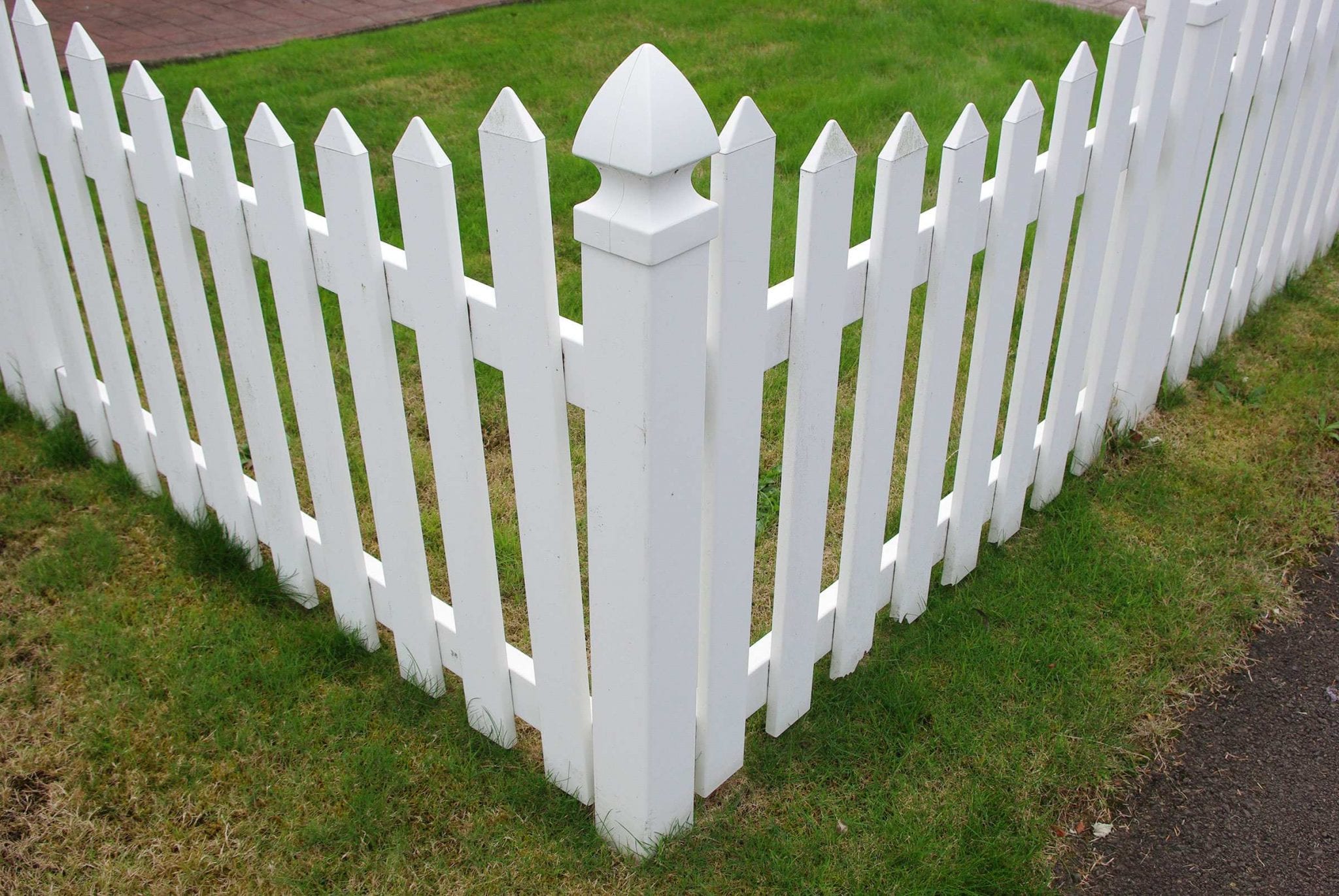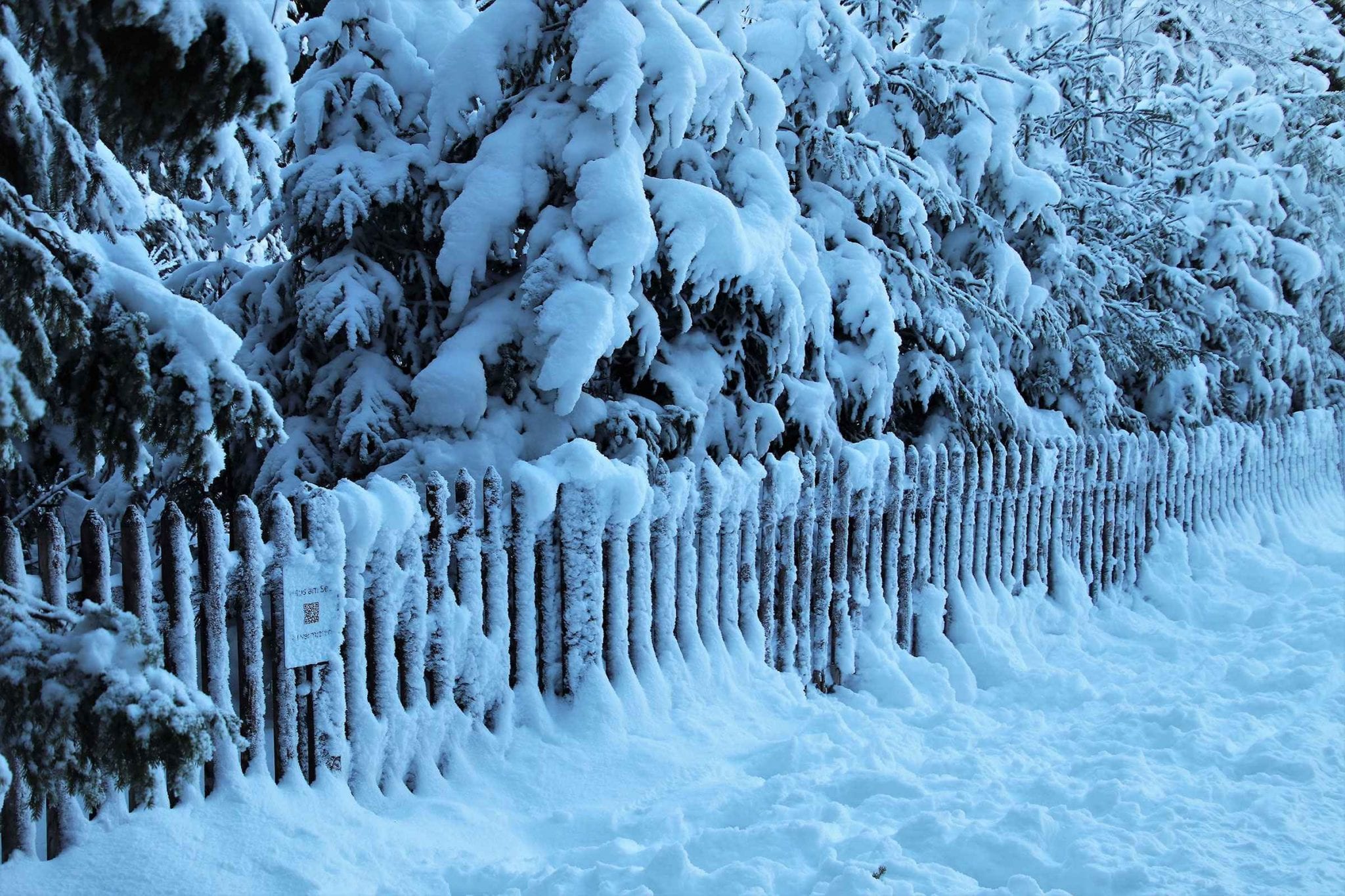Vinyl fencing is stronger and more reliable in harsher weather conditions than traditional wood fences and is more cost-effective than other metal fencing types. Maintaining your fence when winter hits or installing a fence in winter can be a tricky maneuver if you don’t know what you’re doing. Here’s what you should keep in mind when you’re managing your fence needs during some of the harshest times of the year.
Vinyl Fence Winter Maintenance
The biggest thing to keep in mind is staying on top of maintenance all year long. It’s regularly checking for issues that help ensure your fence is always ready for winter, no matter what happens. Small problems can become huge later on, so staying on top of things is the best way to ensure you preserve your fence for as long as possible.
Vinyl is tough, but you’ll notice that most of the categories here involve keeping things from putting pressure on your fence and ensuring that debris and other things don’t pile up or cause staining. Here’s what you should keep in mind as you maintain your vinyl fence for winter:
- Remove snow, debris, and tools
- Keep on top of stains
- Inspect your fence regularly
Now that you’ve got the basics, let’s go into a little more detail about what to do before, during, and after winter.
Keep Snow Away
Snow is heavy and can put a lot of pressure on your fence. Make sure you brush snow off your fence each day gently so that the weight of the snow doesn’t build up and cause damage. It’s also helpful to ensure that moisture doesn’t sit on your vinyl and cause potential discoloration or other damage.
You should also blow snow away from your vinyl fencing if you can and use markers for directing your snowplow. You don’t want damage. Also, ensure that you move drifts away from the fence so that it can properly dry.
Rake Leaves and Other Debris
Debris can cause damage in much the same way as snow. Allowing debris to build up around your fence puts a lot of pressure on your vinyl fencing and can cause warping or other issues. To maintain your fence’s integrity, ensure that you’re removing all debris and keeping the area around your fence clear as much as possible.
Keep your fence base free of all debris to help make it easier to deal with snow buildup. Shoveling snow that’s piled up on top of a bunch of leaves and branches makes winter maintenance difficult. Don’t make things harder on yourself.
Cut Back Limbs
One danger that happens from above is limb damage. As snow and debris weigh down limbs, they’re likely to break and cause huge amounts of damage falling onto your fence. The safest thing to do is cut back any limbs that threaten your fence during this season.
If your neighbor’s tree is in the danger zone, it could be a good idea to have a friendly discussion if possible. Ensure that your neighbor keeps limbs trimmed back as a way to avoid damage for both of you.
Address Dirt and Mold Immediately
Dirt and mold often build up during winter time when we’re less likely to be outside and paying attention. In the spring, this extra moisture can be unsightly if mold and dirt have stained your vinyl fencing materials. While these stains can be easy to get out if you catch them early, once they set in, it can prove frustrating.
Getting your vinyl fencing or vinyl privacy fencing ready for winter means examining it carefully in the fall when you can get out and clean any mold or dirt off fences and inspect your fence regularly during the winter for signs of damage.
Make Repairs Early
Late fall is also an excellent time to undertake any repairs you need to make for your vinyl fencing. Inspect the fence for any loose or missing elements so that you can schedule repairs before the harsh weather sets in. Any damage to the fence will only get worse with dropping temperatures and the weight of snow.
Contact a professional if you don’t feel comfortable making repairs on your own. This can be a good way for you to ensure that your fence makes it through winter without any lingering issues or more significant problems to fix come springtime.
Get Rid of Marks
Before your winter temperatures drop, this is also a great time to get rid of any lingering scuffs or marks. Warm water and a gentle soap can help remove marks so that they don’t set in over wintertime. Be honest, you probably aren’t going to get out there and clean marks off the fence when it’s below freezing, so take care of this early.
If the mark doesn’t come off easily, you may be able to use paint thinner to remove them gently. Avoid things like bleach or abrasive cleaners because they can severely damage the finish of your fence and make winter damage worse.
Discourage Mold and Mildew
A simple solution of water and vinegar can help prevent mildew and mold year-round. One part water and five parts white vinegar sprayed onto the fence inhibits growth and ensures that you can stay on top of your fencing needs.
It can also help dissolve water and pollution stains. If you live in a larger suburban area, your fence is likely to come in contact with lots of types of pollution, providing an even bigger reason to stay on top of your fence’s finish.

Keep Plant Material Away
Grass doesn’t grow much during the winter, and in times of snow, it may not grow at all. However, you should keep an eye on creepers and grass growing in between fence slats. Removing these early helps prevent damage at the base of your fence and keeps a small issue small.
Simple weed-eating or hand weeding helps cut down on these pesky plant issues. A weedkiller can also help cut down on growth in hard to reach places or where you have trouble getting to the roots of your weeds.
Don’t Store Things on Your Fence
Avoid the temptation to use your fence in the same way you use the walls of your garage like leaning ladders, garden tools, and other things against the fence during the fall and winter. Not only do they put pressure on your fence that can cause damage through splitting or warping, but they also provide a way for leaves and snow to pile up and sit.
This damage can sometimes create weak spots in your fence that must be fixed later. It’s best to use your garage for storage and keep your fence debris and tools free. If you’ve put some things against your fence, now is the time to gather them up before the snow hits.
Clean Your Fence After Winter
When winter is over, and spring comes around, the last thing you may want to do is fence repairs. However, it’s time to inspect your vinyl fencing once again to ensure that it doesn’t have any scratch marks, scuffs, mold or staining. If it does, you can get on it right away.
Examining your fence regularly is a huge part of ensuring that your vinyl fence is winter-ready. Taking the time before, during, and after winter to check for damage and other issues helps ensure that your fence gets the most life possible.
Winter Maintenance
Winter maintenance happens all year long. If your fence is in good shape and you’re inspecting it regularly for issues, you shouldn’t have significant problems during winter itself. If you wait to handle problems only when they’re large, you may be in trouble of the following:
- Lasting staining – mold and mildew or dirt can cause unsightly stains that you can’t get rid of. Pollution and minerals from water also do the same. You don’t want a fence that’s clean and never looks that way.
- Cracking – allowing snow to pile up, grass to grow between slats, and leaves or branches to stay stuck, you’re messing with the integrity of the fence and shortening its lifespan.
- Structural issues – if you store things close to the fence or you allow limbs to grow over your fence, you’re increasing the potential of massive structural damage.
The best fence for cold weather can withstand the season with grace, but even the best fence for cold climates needs regular maintenance. Ensure that you’re giving your fence the best chance you can by going through the maintenance process and staying on top of little things as much as possible. Overall, a vinyl fence in cold weather is a good option and your best fences for snow.
If you’re installing a fence in the winter, you’ll also want to take precautions, keeping snow and debris away from the sight and being mindful that the change in temperatures can cause expansion and contraction. It’s more important than ever to check your fence regularly for smaller issues and ensure that you have the best chance of success with your installation.
As always, call a professional if your fencing needs are bigger than what you can handle. Professionals are ready to help ensure that your fence stays looking great all year long.


